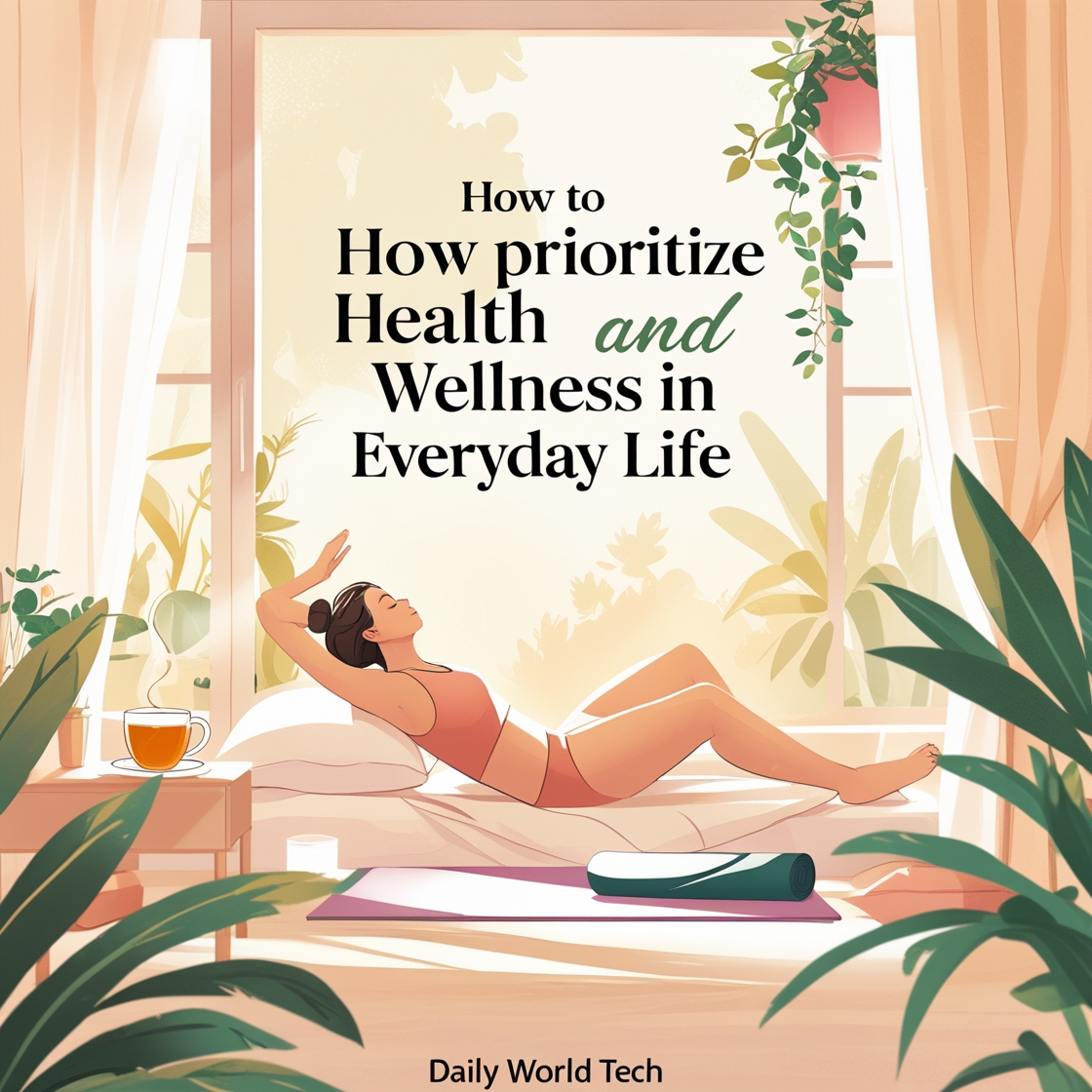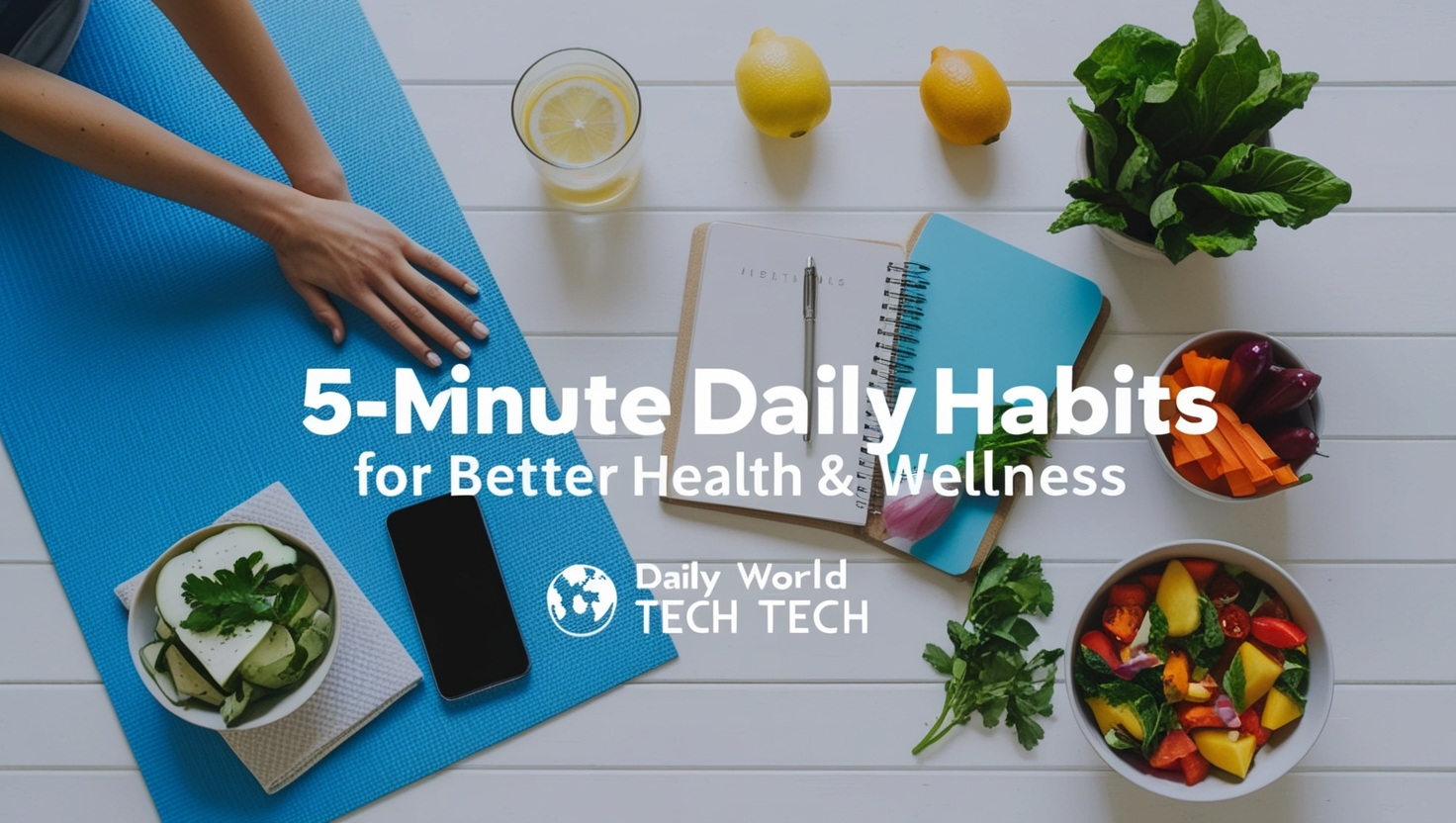With the high-energy and technologically-dense life, health and wellness is usually placed on the back burner. Work, family, and social life may exhaust us, make us de-motivated, and distant from our physical and mental needs. But it is possible to incorporate wellness and health into the daily routine; it will not only be possible but also a necessity to live a well-balanced life.
No matter what path you choose in life (to be a student, a full-time employee, a parent, or a person who does several things at the same time), you should never regard your well-being as a luxury. It is a must, which influences all aspects of your life—your mood, energy efficiency, productivity, relationships, and lifespan. This blog will take a look at what you can do to make health and wellness become a natural part of your life by use of practical, sustainable, and effective solutions.
1. Know What Health and Wellness Are All About
It is imperative to get an idea of what health and wellness actually entail before undertaking any lifestyle transformation. Those are interchangeable yet slightly different terms.
- Health is a state of being in physical freedom from sickness or injury. It means physical, mental, and social health.
- Wellness is a deeper version of physical, mental, and spiritual well-being which empowers the body, involves the mind, and heals the spirit.
Eating right or exercising is not all that wellness is about—it is a proactive and dynamic process of knowing oneself well, growing, and deliberate living. It consists of emotional resilience, environmental awareness, occupational satisfaction, as well as spiritual connection.
2. First, Is Mindful Morning Routines
How you start your morning determines how you have the rest of the day. Having a conscious morning practice can form a good basis towards living a healthier life.
- Start early so you get time to get into the day gradually.
- A glass of water when you get up is an excellent way to rehydrate.
- Reverse blood by stretching or performing light exercises.
- Do not go to screens during the first 30 minutes; instead, embrace mindfulness or journaling.
- Have a healthy breakfast that contains proteins, fiber, and healthy fats.
Even simply doing a 10-minute meditation session or a gratitude session in the morning would make a big difference to your mental clarity and emotional groundedness throughout the day.

3. Physical Activity in Your Day
One of the healthiest activities is exercising to improve physical and mental health. The good news is that it doesn’t require hours or a gym membership in order to keep moving.
- Make brief walks between breaks.
- Prefer stairs over elevators.
- See what exercises you can do at home via apps or YouTube.
- Socially motivate yourself by joining a sports club or yoga class.
- Any motion dance, bike, garden and anything involved.
The aim is consistency. A short walk each day is better than an intensive exercise once a week.

4. Making Nutrition a Priority and Not Dieting
Healthy eating does not imply a diet. It is about taking mindful food decisions so that you can feed your body.
- Consume unprocessed foodstuff fruits, vegetables, whole grains, nuts and seeds, and lean meat.
- Restrict processed food and unhealthy snacks.
- Drink more water, herbal tea, or waters with infusion.
- Pre-plan meals to avoid last-minute unhealthy food choices.
- Listen to your body—eat when you’re hungry and stop when full.
Cooking at home more often is a great way to control what goes into your meals and to foster a healthier relationship with food.
5. Quality Sleep
Wellness is inseparable from sleeping. Inadequate sleep influences not only your mood, intellectual activities, and immunity, but also your weight.
- Establish a regular bedtime, even on weekends.
- Stay away from screens and bright lights an hour before going to bed.
- Create a relaxation bedtime ritual, such as reading or a warm bath.
- To improve sleep, keep your room cool, dark, and silent.
Almost all your health habits can be improved by prioritizing 7–9 hours of sleep each night.

6. Deal with Stress by Purposeful Methods
Stress is bound to exist; it is just about how you cope with it. Chronic stress can cause burnout, heart disease, anxiety, and other health problems.
- Do deep breathing or meditate daily.
- Attempt journaling to vent feelings and organize thoughts.
- Find creative outlets such as painting, writing, or music.
- Socialize and share emotions with loved ones.
- Take scheduled breaks during the day to rest.
Even five minutes of mindful breathing can help center your thoughts and lower stress levels.
7. Form Supporting Relationships
Being social is a crucial yet underemphasized aspect of well-being. Good relationships increase mental health, reduce stress, and even extend longevity.
- Be around inspiring, positive people.
- Avoid toxic relationships that drain your energy.
- Make time for quality moments family dinners, or coffee with friends.
- Communicate openly.
- Seek support from healthcare professionals, community groups, or online forums.
A supportive community helps you remain accountable to your health and wellness goals.
8. Make Realistic Goals in Wellness
Instead of trying to change your lifestyle overnight, start with small, achievable steps.
- Follow the SMART method: Specific, Measurable, Achievable, Relevant, Time-bound.
- Track your progress using apps, journals, or checklists.
- Celebrate milestones every step is progress.
- Be patient with yourself when you get off track; reset and continue.
Wellness is a lifelong journey. The goal is progress, not perfection.
9. Get a Balance on Work-Life
In a culture where hustling is glorified, setting boundaries and reclaiming time is essential.
- Have defined working hours and stick to them.
- Take frequent breaks to stretch, hydrate, or relax your eyes.
- Avoid answering work calls or emails at night.
- Use vacation days and prioritize time off.
- Create a healthy work environment—ergonomic chairs, sunlight, and a clutter-free workspace.
Balancing work, rest, and recreation helps prevent burnout and boost productivity.

10. Remove Clutter in Your Head and Room
A chaotic environment often mirrors a chaotic mind. Simplifying surroundings can ease anxiety and increase focus.
- Declutter your home and workspace regularly.
- Practice digital detox unplug from devices regularly.
- Organize your tasks and schedules.
- Avoid multitasking focus on one task at a time.
- Engage in mental hygiene let go of negative self-talk and limiting beliefs.
A clear space and clear mind promote emotional balance and mental clarity.
11. Preventive Healthcare Practice
Being proactive about health prevents larger issues down the road.
- Have regular check-ups don’t wait for symptoms.
- Stay updated on vaccinations and screenings.
- Visit your dentist and optometrist annually.
- Understand your family health history to spot risks.
- Prioritize mental health checkups just as much as physical ones.
Health is not only how you feel now, but how you’ll feel in the future.
12. Have Fun and Dance
Exercise doesn’t have to feel like a chore. Enjoying it makes you more likely to continue.
- Try different activities swimming, hiking, martial arts, dancing.
- Involve family or friends to make it social.
- Take nature walks for mind and body.
- Play sports or games that energize you.
When joy is linked to movement, it becomes a positive daily ritual instead of an obligation.
13. Be Grateful and Have Positive Thinking
Mental wellness starts with mindset. Gratitude and optimism reduce stress and depression.
- Keep a gratitude journal note three things daily.
- Use affirmations to start your day with purpose.
- Focus on solutions, not problems.
- Be content with what you have instead of comparing with others.
Gratitude turns what we have into enough, unlocking abundance in all life areas.
14. Be Educated and Informed
Knowledge is power in health and wellness.
- Read trusted wellness blogs, books, and journals.
- Follow licensed professionals on social media.
- Join webinars or online courses.
- Verify information sources to avoid misinformation.
- Stay updated on nutrition, fitness, and mental health research.
Being informed helps you make decisions tailored to your needs.
15. Find Balance in the 8 Dimensions of Wellness
According to the National Wellness Institute, wellness includes 8 dimensions. Balancing them leads to overall well-being:
- Physical – Nutrition, sleep, exercise
- Emotional – Stress management, self-care
- Social – Relationships and community
- Intellectual – Mental stimulation and curiosity
- Spiritual – Purpose, beliefs, values
- Occupational – Job satisfaction and productivity
- Environmental – Safe and pleasant surroundings
- Financial – Money management and reduced financial stress
No dimension should be neglected. Regularly assess which areas need more focus and strive for balance.










